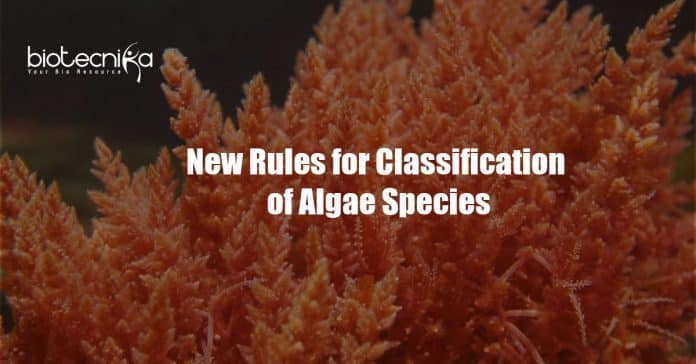New rules for classification of algae species
Sophie McCoy, Assistant Professor of Biological Sciences, Florida State University (FSU), and her team are putting forward a proposal to consider the formal definition of algae species and subcategories to the research community. The team recommends algae to be first classified by the DNA of the species, then consider the other traits.
The work includes collaboration with Nova Mieszkowska, a research fellow, Marine Biological Association, UK, and Stacy Krueger-Hadfield, Assistant Professor, University of Alabama, Birmingham. It was published in the Journal of Phycology this week.
McCoy said that the algal species should evolve separately from other lineages, so that’s DNA-based. However, the differences in their ecology, such as what they look like or their role in the environment should also be taken into account.
The published article is rather a perspective, not a definitive answer. The team hopes to open conversation in the scientific community and are expecting comments on the topic by the community.
Algae generate about half of the oxygen in the world, so algae matter more than most people realize, commented McCoy. An entire food web of the ocean depends on algae and so thus humanity.
Ways to define an
animal species have been established by scientists, such as determining the ability of an organism to produce viable offspring which can reproduce in the future. For instance, a mule is a hybrid between a horse and a donkey, but a mule cannot reproduce. This helps to distinguish a horse and a donkey as two separate species. But similar categorization does not work for algae. Algae has its own unique and complex stages of the lifecycle and very often they interbreed with algae from other species.Algae have more of a web rather than having a ‘species tree’, like a family tree, commented McCoy.
It is difficult to formalize categories to classify algae because of its intricacy. Criteria for algae classification may vary from scientist to scientist, as some might categorize offsprings of two algae species as a distinct species while others might not do so. Some might consider discrete DNA for classification while others might consider the physical characteristics of the organism.
A universal set of rules is missing when it comes to the classification of algae. McCoy questions if different breeds or populations of algae are artificially being called as species. She further added to it that the number of species could go way up or way down depending on how the rules are applied.
The IUCN Red List of threatened species is the most comprehensive inventory of the global conservation status of biological species. The extinction risk of species is evaluated by scientists with the help of this list. So, the perception of biodiversity and conservation changes depending on how a species is defined, said McCoy.
Apart from conservation, catastrophes – from the destruction of coral reefs to algal blooms in waterways, all could be extenuated by discussing and specifying the classification of algae. McCoy said lack of uniform identification is likely to be related to the mysteries surrounding this type of growth.
If the species is not correctly grouped or separated, it will be difficult to understand how the different types of algae respond to climate change or pollution said, McCoy.
This philosophical change about defining what is a species in terms of algae is an initiation point for McCoy and her team. Along with the initiating conversation, she has planned on research that would build on the concept in the years to come.
New rules for classification of algae species
Author : Mayuree Hazarika



























